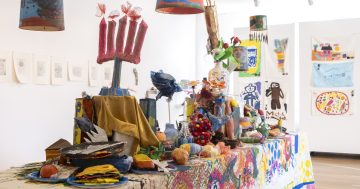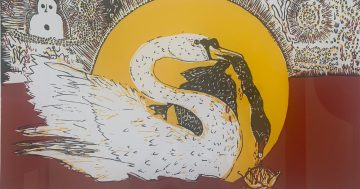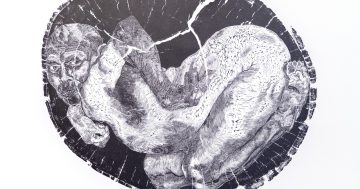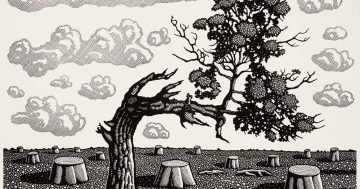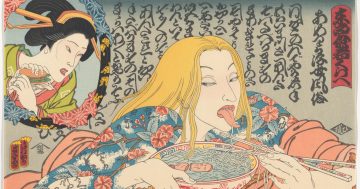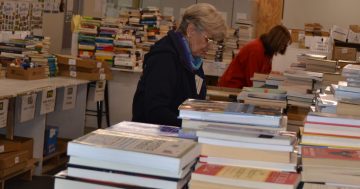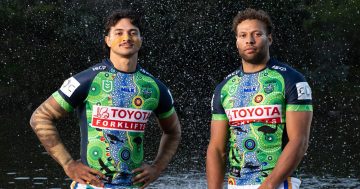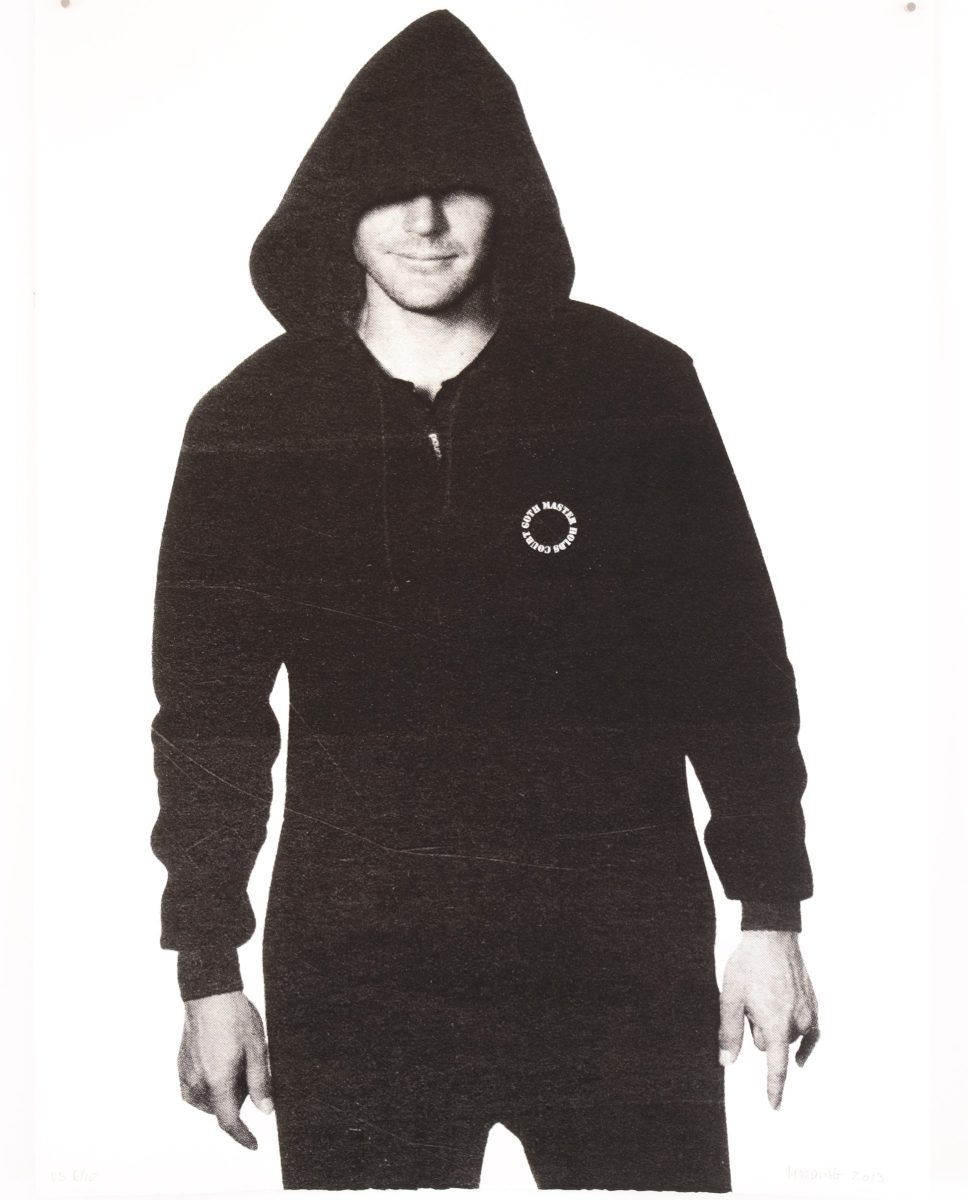
Richard Harding, Wardrobe Act 1 series: Goth Master, 2013, photographic screenprint with flocked glitter, 105cm x 75cm. Unique state, edition of 10. Printed at RMIT University Print Studio and Miller Studio. Photo: Megalo.
Richard Harding, an honorary fellow at RMIT School of Art, Melbourne, and one of Australia’s most respected artist printmakers, is the subject of a major solo exhibition at Megalo in Kingston. It is a show that draws on his work from the past three decades.
Harding has always been a socially engaged printmaker who, throughout his art practice, created work that explored both his personal identity and the broader social context within which members of the LGBTQIA+ community are seen. Throughout the exhibition, there is a constant play between the private and the public, that which is intimately personal, and imagery that has been sourced from mass media.
In many ways, it is a challenging and confronting exhibition, where text and images refer to the queer sub-culture with coded messages and slightly unnerving enigmatic imagery. It is also an exhibition about printmaking – the images we encounter could only have been made as prints – stark woodcut relief prints, etched glass, photo screenprints, collage and glitter. It is the quality of seriality and repetition that runs throughout the display, with printmaking constantly repeating the image and, at the same time, subtlety changing the image so that we, as viewers, are drawn into the image and then, as a revelation, experience the change in meaning.
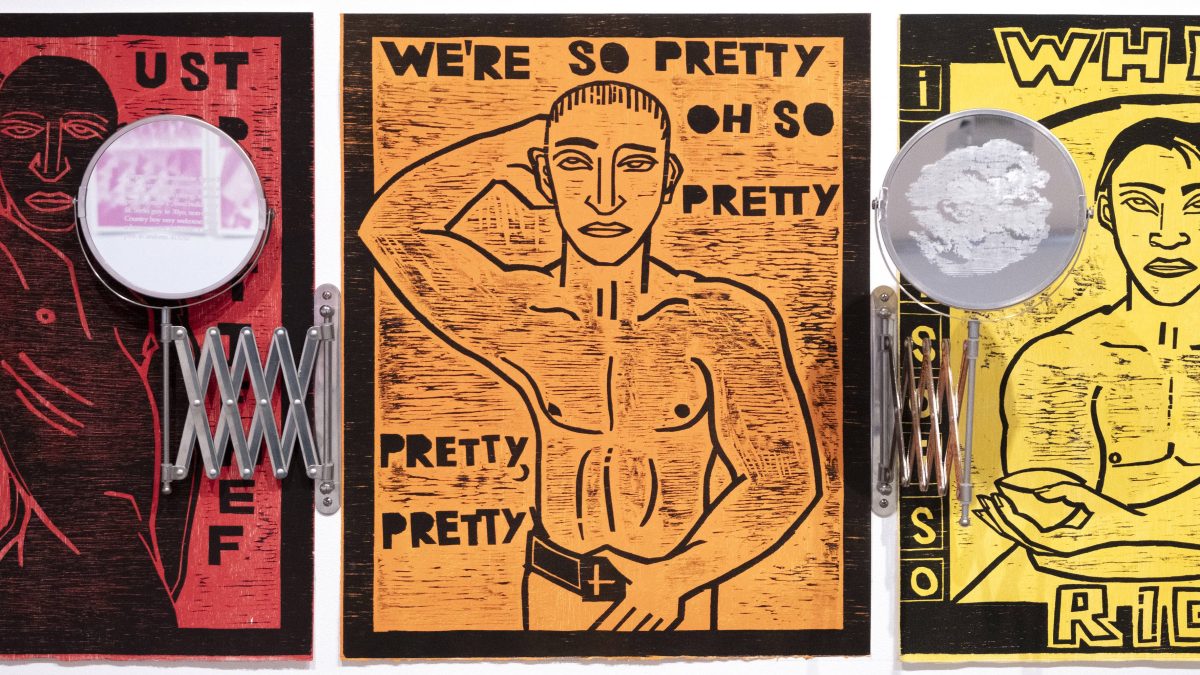
Richard Harding, Rainbow Woodcuts, 1996, installation view with mirrors. Photo: Megalo.
The earliest series of prints at the exhibition, The Rainbow Woodcuts, 1996, draws on the colours of the rainbow flag of the gay community of the 1990s. The colours are symbolic of gay culture at the time. For example, as the artist explains, Acronym ISO (Yellow) denotes the newspaper abbreviation for ‘In Search Of’ used in personal columns at the time. ISO talks to interracial relationships when racism within the LGBT community was being challenged by folks from across the racial spectrum. More (Blue) taps into experiences of love and commitment, while Sport (Red) celebrates sexual freedom at times of abstinence and fear. LKG4 (Purple) announces an ongoing search for sexual compatibility. Vacant (Orange) talks to perceptions of narcissism, while Dream (Green) addresses rights over one’s own body for people living with HIV/AIDS.
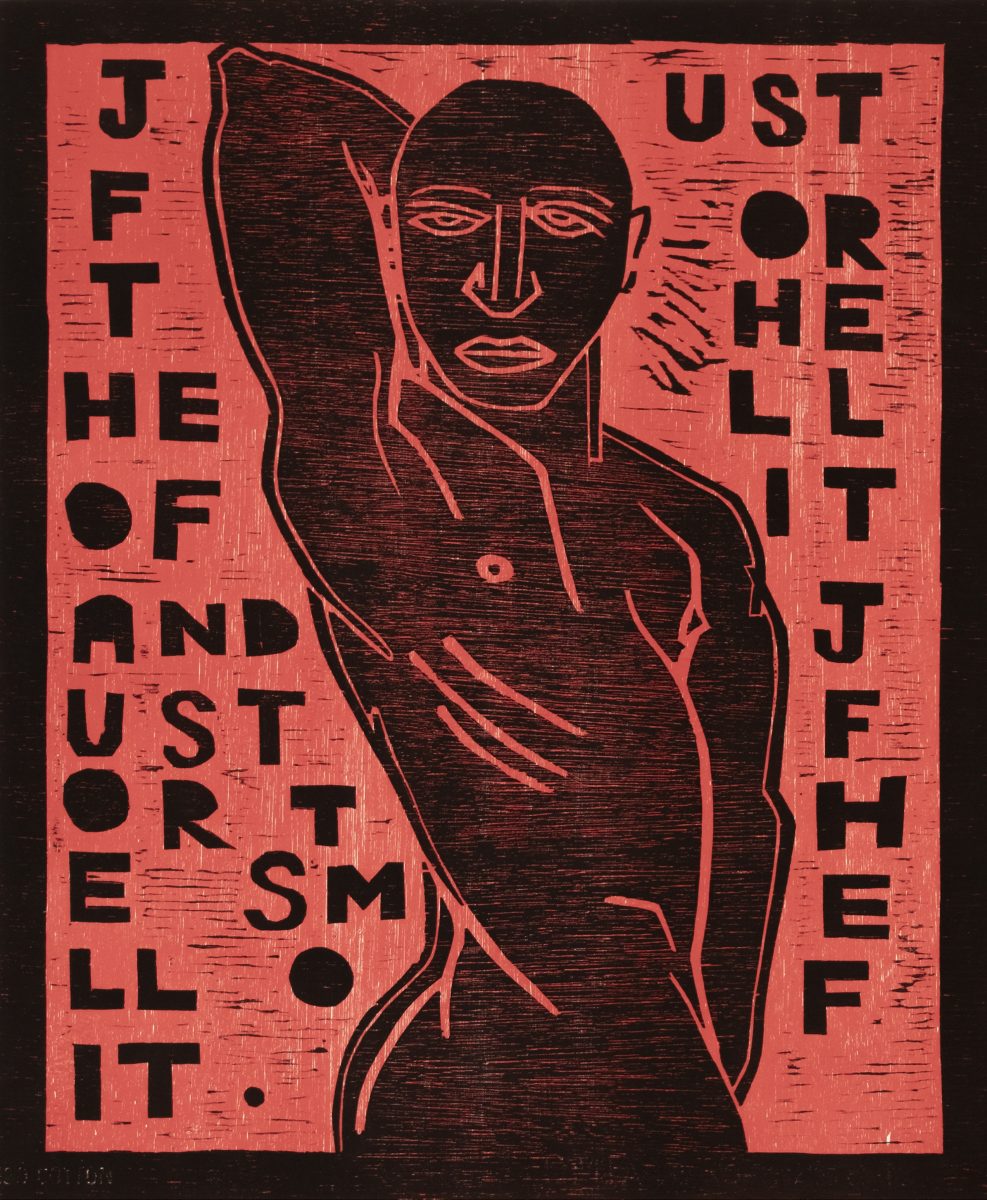
Richard Harding, Rainbow Woodcuts: SPORT, 1996, woodcut relief print, 60cm x 50cm Edition of 24, Printed at Australian Print Workshop. Photo: Megalo
In front of these woodcuts appear shaving mirrors on which are etched advertisements from gay personal columns so that, as viewers, we see a reflection of ourselves, texts offering services or a meaningful relationship, and the coded imagery concerning gay life.
Another series of prints that I personally found particularly haunting and with a strong sense of presence is the Wardrobe Act 1 series of large-scale photo-screenprints with flocked glitter. The repeated image is that of a male figure, half-veiled by the hoodie that he is wearing, with a different composed glitter logo on his chest in each print.
Harding comments: “The homogenised hooded garment functions as a sign for a generic masculine original, produced from a reproductive matrix that suggests sameness yet offers – by the act of printing – using body weight and multiple inking passes: difference.”
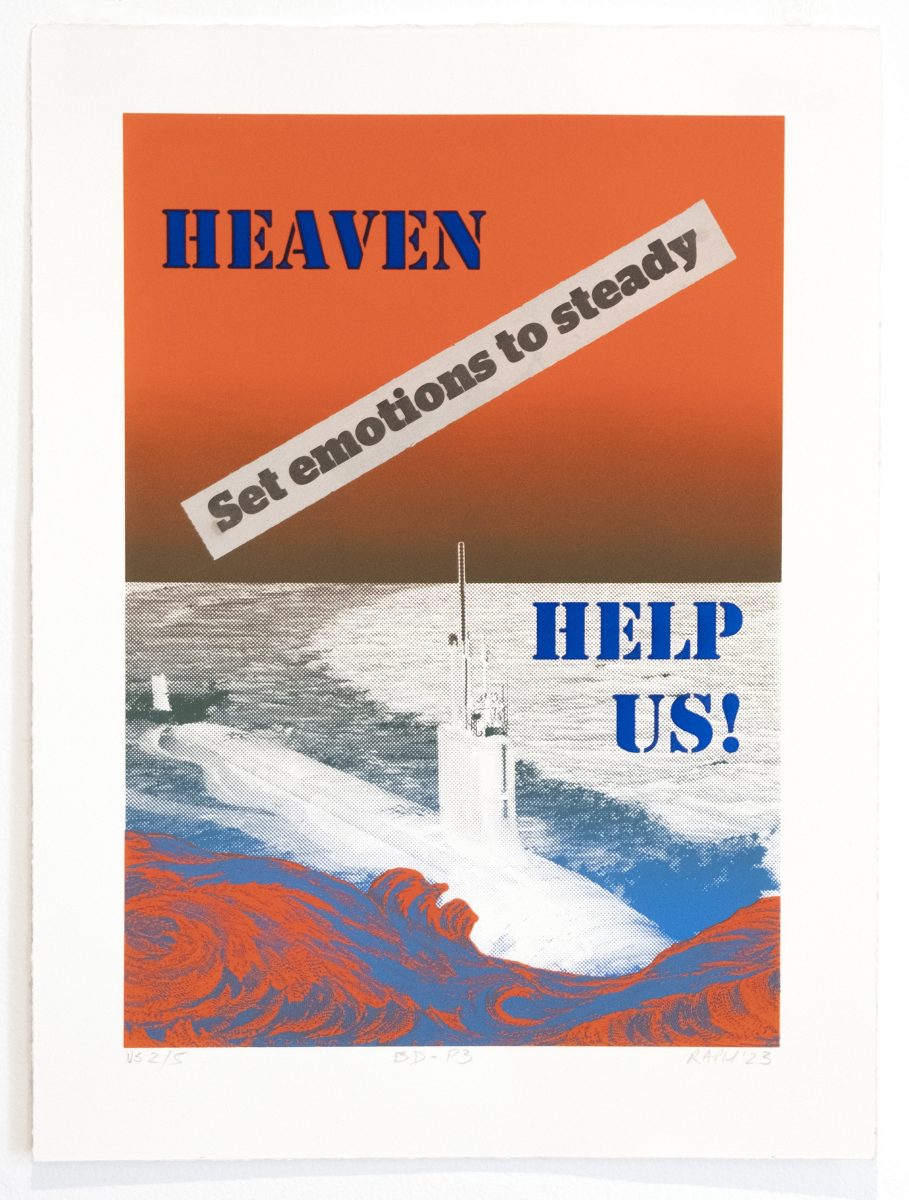
Richard Harding, Boondoggle: Set emotions to steady, 2023, photographic screenprint with collaged news headline 42 cm x 30 cm. Edition 5 unique state, Printed at and by Troppo Print Studio. Photo: Megalo
A recurring theme throughout the exhibition is the questioning of “queer masculinity”, where images drawn from the mass media are interrogated through repetition yet are accompanied with subtle changes.
Another series, Boondoggle—phase three, 2023, is a response to the announcement of the AUKUS military pact, where, through the prism of history, we are given notice of the storm that we will be creating for ourselves. Other series include Past and Present, 2017, and Pinkwashing, 2018. An observant visitor to the exhibition is rewarded with a free Harding print as a souvenir of their visit.
Harding’s Moving in circles is not an easy exhibition; it is a disturbing and confronting exhibition where the presented images force us to confront uncomfortable truths about our society and its accepted norms.
Richard Harding, Moving in circles, is on display at the Megalo Print Studio, 21 Wentworth Avenue, Kingston, until 24 August. The studio is open Tuesday to Saturday from 9:30 am to 5 pm.












